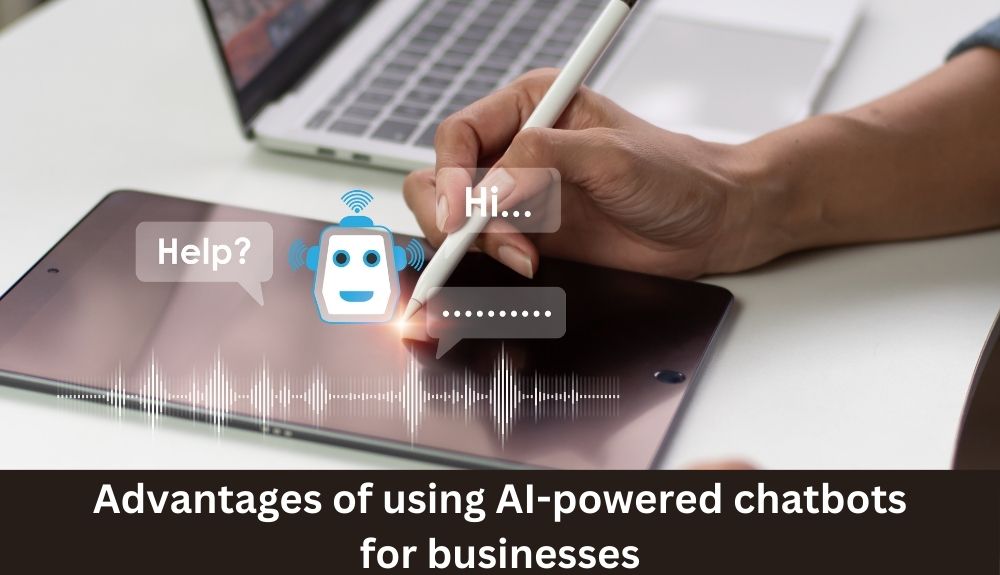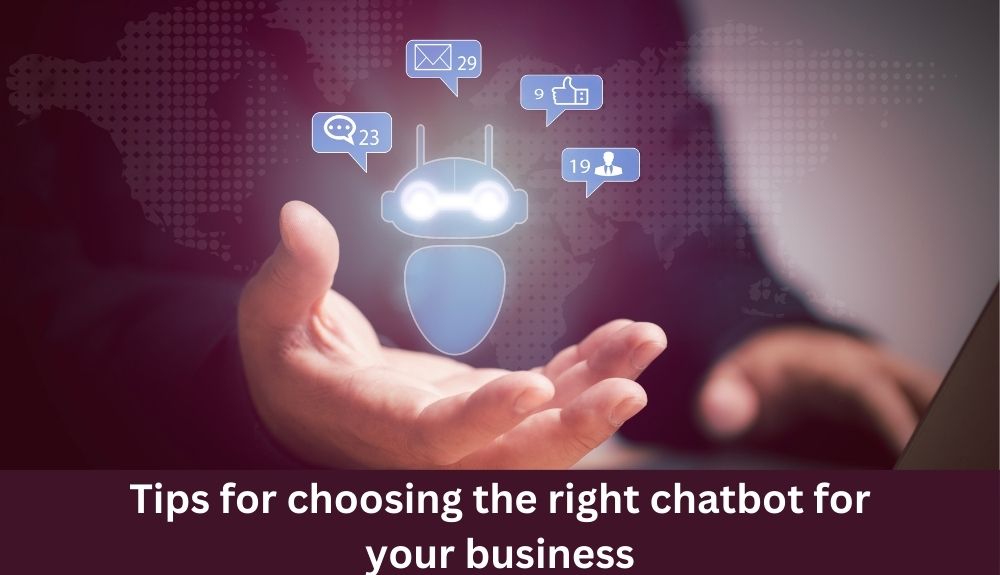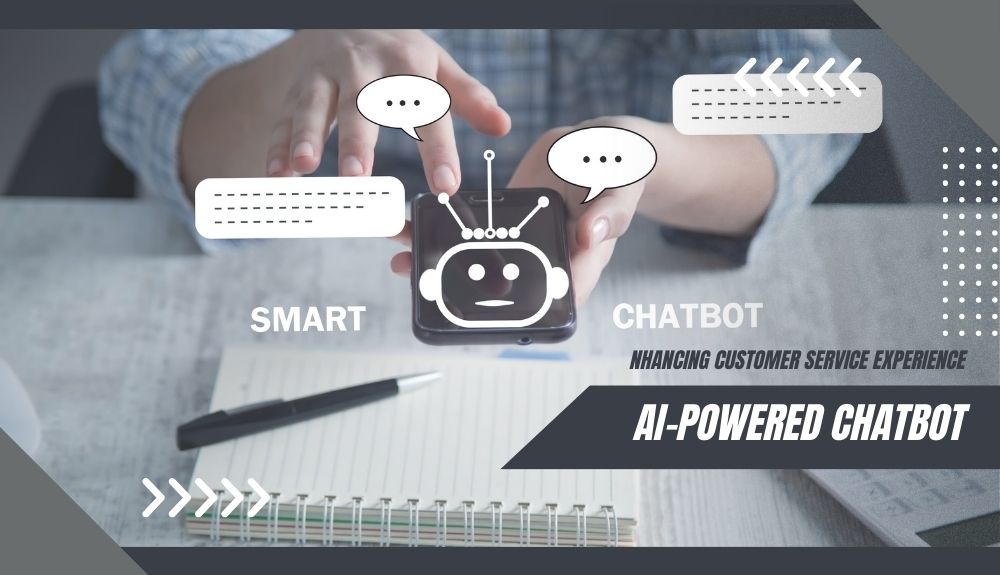Introduction to AI-powered chatbots
Welcome to the age of artificial intelligence! Technology has taken great leaps and bounds, bringing about revolutionary changes in every aspect of our lives. One such innovation that is transforming the way businesses interact with their customers is AI-powered chatbots. These intelligent virtual assistants are being deployed by companies across various industries to enhance their customer service experience. In this blog post, we will delve into the world of AI-powered chatbots and explore how they are revolutionizing customer service. So sit back, relax, and get ready to discover the exciting possibilities that lie ahead!
How chatbots are revolutionizing customer service
Chatbots have emerged as a game-changer in the realm of customer service, revolutionizing the way businesses interact with their customers. Gone are the days when customers had to wait endlessly for a representative to address their concerns. With AI-powered chatbots, businesses can now offer instant and personalized assistance round the clock.
One of the key ways chatbots are transforming customer service is through their ability to provide quick and accurate responses. These intelligent virtual assistants leverage natural language processing (NLP) algorithms, enabling them to understand and interpret customer queries in real-time. By analyzing past interactions and data, chatbots can generate relevant and context-specific answers that cater to each individual’s needs.
Moreover, chatbots enhance efficiency by handling multiple inquiries simultaneously without any compromise on quality or consistency. Unlike human agents who may experience fatigue or make errors due to work overload, chatbots remain tireless and ensure consistent service delivery. This not only saves time for both businesses and customers but also reduces operational costs significantly.
Another notable advantage of using AI-powered chatbots is their scalability. Businesses can easily handle fluctuations in customer demand by deploying additional bots during peak times without worrying about hiring or training new staff members. This flexibility ensures seamless customer experiences even during high-volume periods such as holidays or product launches.
Numerous successful implementations of chatbot technology across various industries further demonstrate its value in enhancing customer service experiences. For instance, airlines utilize chatbots for automated flight updates and booking confirmations while e-commerce platforms employ them for personalized product recommendations based on user preferences.
However, it’s important to acknowledge some challenges associated with AI-powered chatbot systems as well. Despite advancements in NLP algorithms, there might still be instances where bots struggle with understanding complex or ambiguous queries from users accurately. Additionally, maintaining a conversational tone that feels natural remains an ongoing challenge for many businesses implementing these technologies.
As we look ahead into the future of customer service, AI will undoubtedly play an increasingly significant role. With the continuous development of machine learning algorithms, chatbots will
Advantages of using AI-powered chatbots for businesses

1. Improved customer service: AI-powered chatbots offer businesses the ability to provide round-the-clock customer support without the need for human intervention. This means that customers can have their queries resolved instantly, leading to increased satisfaction and loyalty.
2. Cost-effective solution: Implementing AI-powered chatbots can significantly reduce operational costs for businesses. By automating repetitive tasks and handling multiple customer interactions simultaneously, chatbots help streamline operations and free up resources that can be allocated elsewhere.
3. Personalized interactions: Chatbots are equipped with machine learning algorithms that enable them to analyze user data and personalize responses accordingly. This allows businesses to deliver tailored recommendations, product suggestions, and offers based on individual preferences, enhancing the overall customer experience.
4. Increased efficiency: With AI-powered chatbots handling routine inquiries, human agents can focus on more complex issues requiring critical thinking or emotional intelligence. This boosts productivity levels within the organization while ensuring prompt resolution of customer concerns.
5. Scalability: As businesses grow, so do their customer bases and support needs. Unlike human agents who may struggle to handle a high volume of simultaneous conversations effectively, chatbots excel at scaling up operations effortlessly without compromising quality or response times.
6. Data-driven insights: Every interaction with an AI-powered chatbot generates valuable data that can be analyzed to gain insights into customer behavior patterns, pain points, preferences, and trends in real-time. These insights empower businesses to make informed decisions about marketing strategies and product development initiatives.
In conclusion:
AI-powered chatbots offer numerous advantages for businesses seeking to enhance their customer service experience by providing instant support anytime anywhere while reducing costs associated with traditional methods of communication.
Real-life examples of successful implementation of chatbots
1. Bank of America: The financial giant has introduced Erica, an AI-powered virtual assistant that helps customers with their banking needs. Erica can provide balance information, help pay bills, and offer personalized financial guidance based on the user’s spending habits. With over 25 million users, Erica has proven to be a valuable tool in enhancing customer experience.
2. Sephora: The beauty retailer implemented a chatbot on its website and mobile app called “Sephora Virtual Artist.” This AI-powered assistant allows customers to try on different makeup looks virtually using augmented reality technology. Customers can experiment with various products and shades before making a purchase decision, providing them with a more interactive and personalized shopping experience.
3. Domino’s Pizza: To streamline the ordering process and improve customer service, Domino’s launched its chatbot named “Dom.” Customers can place their orders through Facebook Messenger or voice assistants like Amazon Alexa or Google Home. Dom remembers previous orders and makes recommendations based on past preferences, making it easier for customers to order their favorite pizza.
4. Lyft: The ride-sharing company integrated an AI-driven chatbot into its app called “Lyft Concierge” to assist businesses in booking rides for their employees or clients seamlessly. Through this feature, companies can schedule rides for individuals without requiring them to have the Lyft app installed, eliminating any friction in the transportation process.
5. H&M: The popular fashion brand launched “H&M Kik,” an AI-based personal stylist available through the messaging platform Kik. Users can interact with H&M Kik by answering questions about their style preferences and receive outfit recommendations tailored to their tastes from H&M’s collection.
These real-life examples demonstrate how businesses across various industries have successfully implemented chatbots to enhance customer experiences by providing personalized assistance, simplifying processes, and offering interactive features that engage consumers in new ways
Challenges and limitations of AI-powered chatbots
While AI-powered chatbots have made significant strides in enhancing customer service, there are still challenges and limitations that businesses need to be aware of. One challenge is the potential for misinterpretation or misunderstanding of customer inquiries. Although chatbots are designed to understand natural language, they may struggle with complex queries or ambiguous requests.
Another limitation is the inability of chatbots to provide empathy and emotional connection. Unlike human agents who can express empathy and understanding, chatbots may come across as robotic or impersonal, which can negatively impact the overall customer experience.
Accuracy is another challenge that AI-powered chatbots face. While machine learning algorithms improve over time with more data input, there’s always a risk of providing inaccurate or incorrect information to customers. This could lead to frustration on the customers’ end if they receive incorrect answers or solutions from the chatbot.
Furthermore, maintaining context throughout a conversation can be difficult for chatbots. They may struggle to remember previous interactions accurately, leading to repetitive questions or misunderstandings.
Additionally, privacy concerns arise when personal information is shared with AI-powered chatbots. Businesses must ensure robust security measures are in place to protect sensitive customer data from unauthorized access or breaches.
Constant monitoring and maintenance are necessary for successful implementation of chatbot systems. Regular updates and improvements are needed based on user feedback and evolving business needs.
While AI-powered chatbots have immense potential in enhancing customer service experiences, businesses must be mindful of these challenges and limitations as part of their implementation strategy.
The future of AI in customer service
The future of AI in customer service holds immense potential for businesses looking to enhance their customer experience. As technology continues to advance, so does the capability of AI-powered chatbots. These intelligent virtual assistants are becoming more sophisticated and capable of handling complex interactions with customers.
One key area where AI is expected to make a significant impact is personalization. Chatbots will be able to analyze vast amounts of data on individual customers, allowing them to provide tailored recommendations and solutions based on specific needs and preferences. This level of personalized service can lead to increased customer satisfaction and loyalty.
Another exciting development is the integration of voice recognition technology into chatbots. Voice-based interactions offer a more natural and intuitive way for customers to engage with businesses. The ability for chatbots to understand spoken language opens up new possibilities for seamless communication across various channels.
Furthermore, as machine learning algorithms continue to improve, chatbots will become even better at understanding context and intent. This means they will be able to handle more complex queries and provide accurate responses, reducing the need for human intervention.
In addition, advancements in natural language processing (NLP) will enable chatbots to better understand nuances in human communication such as sarcasm or humor. This will further enhance their ability to engage in meaningful conversations with customers.
The future looks promising for AI-powered chatbots in customer service. With ongoing technological advancements, businesses can expect these virtual assistants to become an integral part of their customer support strategy by providing personalized experiences, improving efficiency, and delivering exceptional service that meets evolving consumer expectations.
Tips for choosing the right chatbot for your business

When it comes to choosing the right chatbot for your business, there are several factors to consider. First and foremost, you need to define your goals and objectives. What do you want the chatbot to achieve? Is it meant to handle customer inquiries or provide product recommendations?
Next, take a look at the features and capabilities of different chatbot platforms. Some chatbots offer natural language processing (NLP) which allows for more sophisticated interactions with users. Others may have pre-built templates that can be customized to suit your specific needs.
Consider the integration options as well. Does the chatbot platform seamlessly integrate with your existing systems such as CRM or e-commerce platforms? This is crucial for ensuring a smooth flow of information between different channels.
Another important factor is scalability. As your business grows, will the chatbot be able to handle increased traffic and user interactions? Look for a solution that can easily scale up without compromising performance.
Additionally, pay attention to analytics and reporting capabilities. A good chatbot should provide insights into user behavior and help identify areas for improvement in customer service.
Don’t forget about support and maintenance. Choose a vendor that offers reliable technical support and regular updates to keep your chatbot running smoothly.
By considering these tips, you’ll be on your way towards selecting the right AI-powered chatbot for your business needs!
Conclusion
AI-powered chatbots have become a game-changer in the realm of customer service, providing businesses with an efficient and effective way to engage with their customers. With their ability to understand natural language, offer personalized recommendations, and provide quick responses 24/7, chatbots are revolutionizing the customer service experience.
The advantages of using AI-powered chatbots for businesses are undeniable. They can handle a large volume of inquiries simultaneously, reducing wait times and improving customer satisfaction. Chatbots also enable businesses to gather valuable data about their customers’ preferences and behavior, allowing them to tailor their offerings accordingly.
Real-life examples have shown how successful implementation of chatbots has benefited companies across various industries. From e-commerce giants like Amazon using chatbots for product recommendations to airlines using them for booking assistance, these intelligent virtual assistants have proven their worth in enhancing customer service experiences.
However, it is essential to acknowledge that there are challenges and limitations associated with AI-powered chatbots. While they excel at handling routine queries, complex or emotionally sensitive issues may still require human intervention. Additionally, maintaining consistency in tone and avoiding misunderstandings can be challenging for chatbot algorithms.
Looking ahead into the future of AI in customer service, we can expect further advancements in natural language processing and machine learning capabilities. The integration of voice recognition technology will also make interacting with chatbots even more seamless.
When choosing the right chatbot for your business needs, consider factors such as scalability options, customization features, integration capabilities with existing systems or platforms, as well as ongoing support from the provider.



